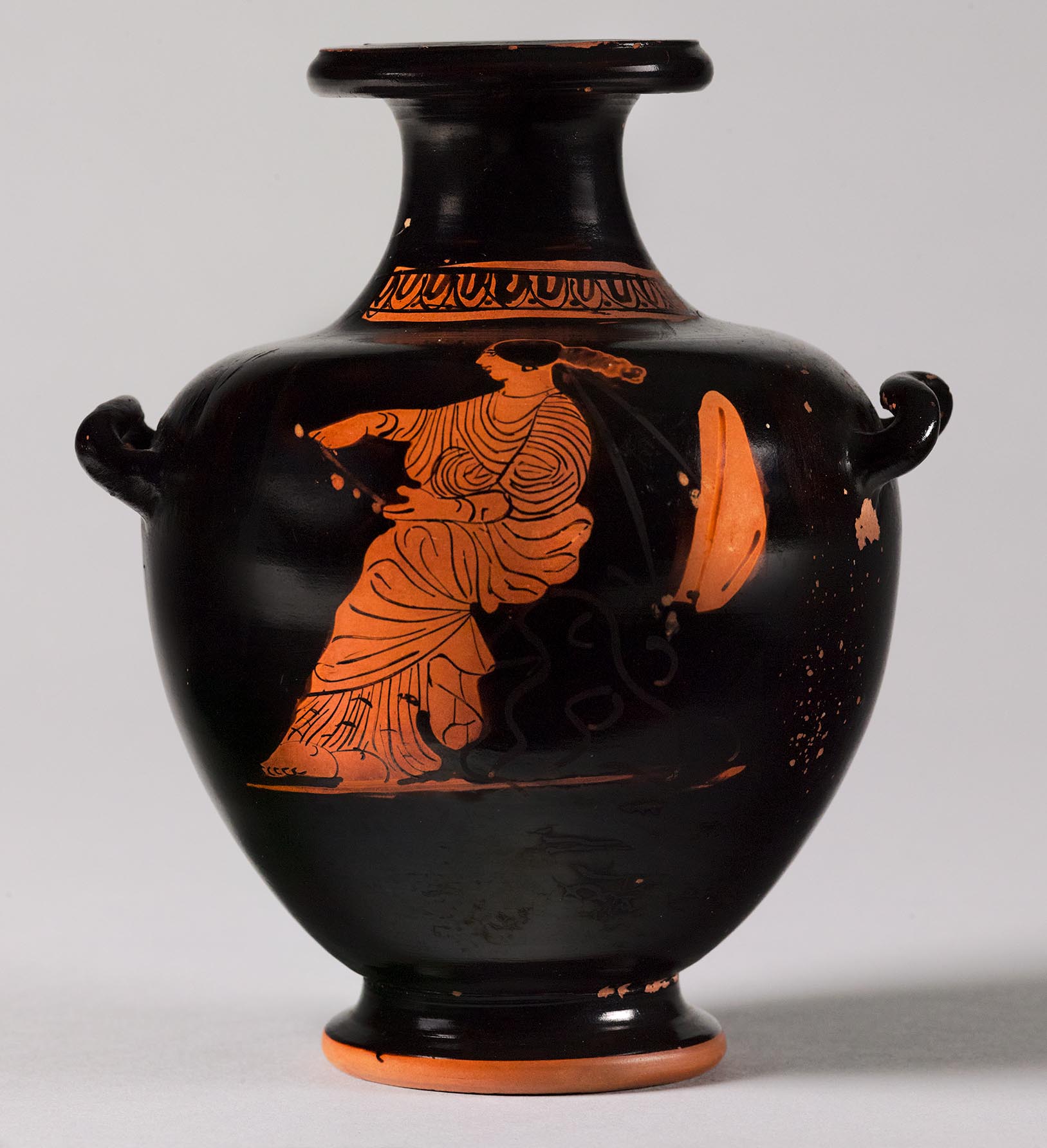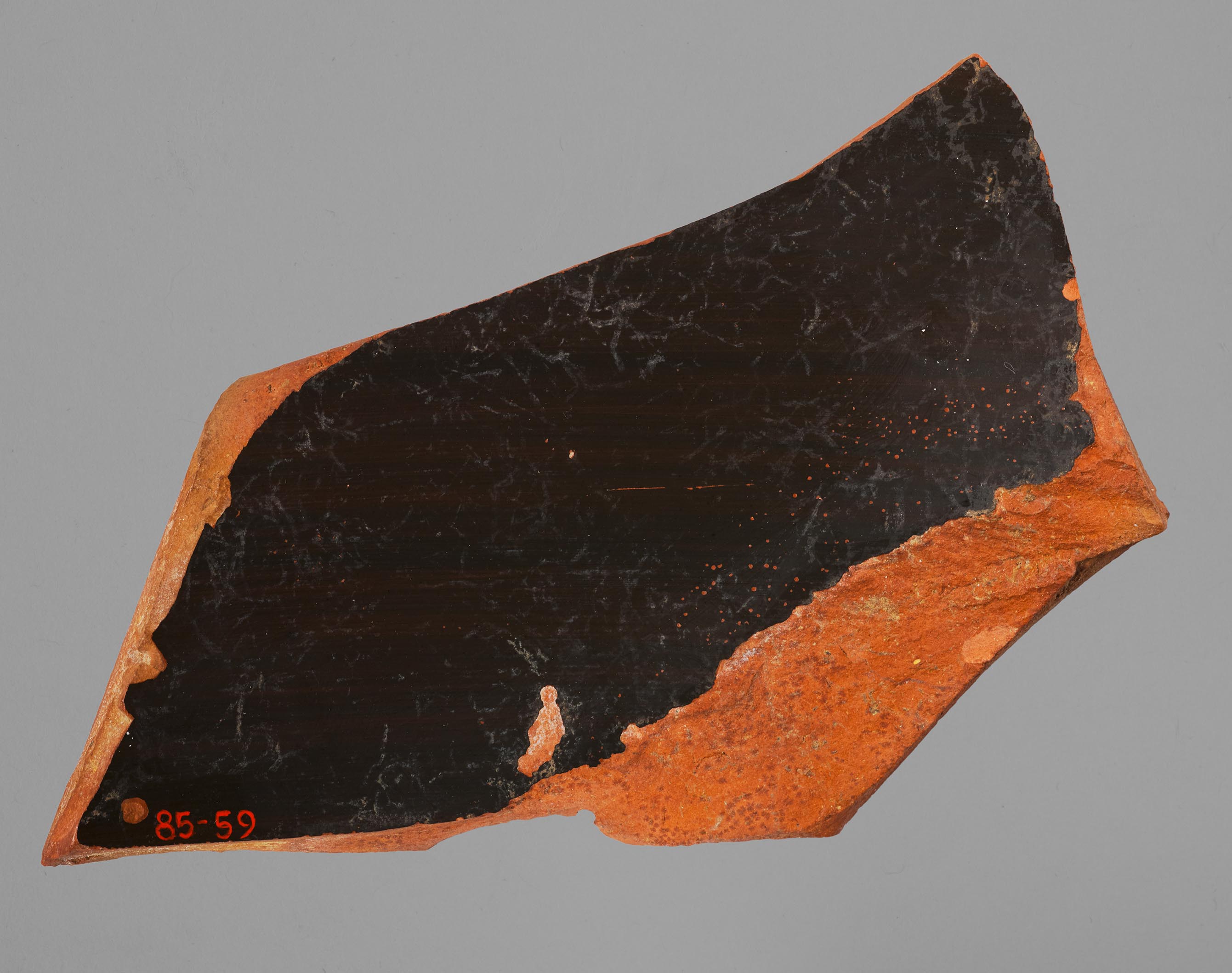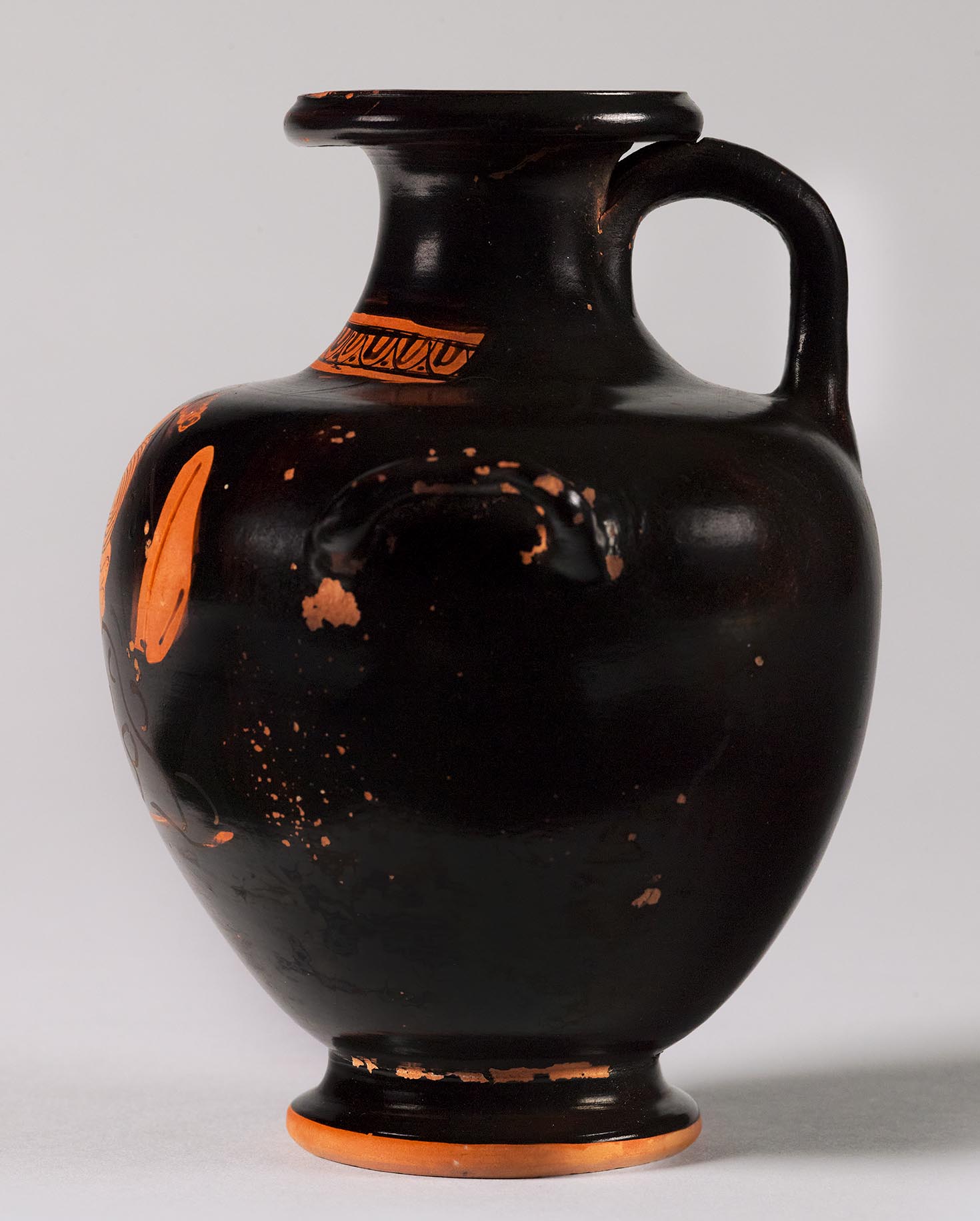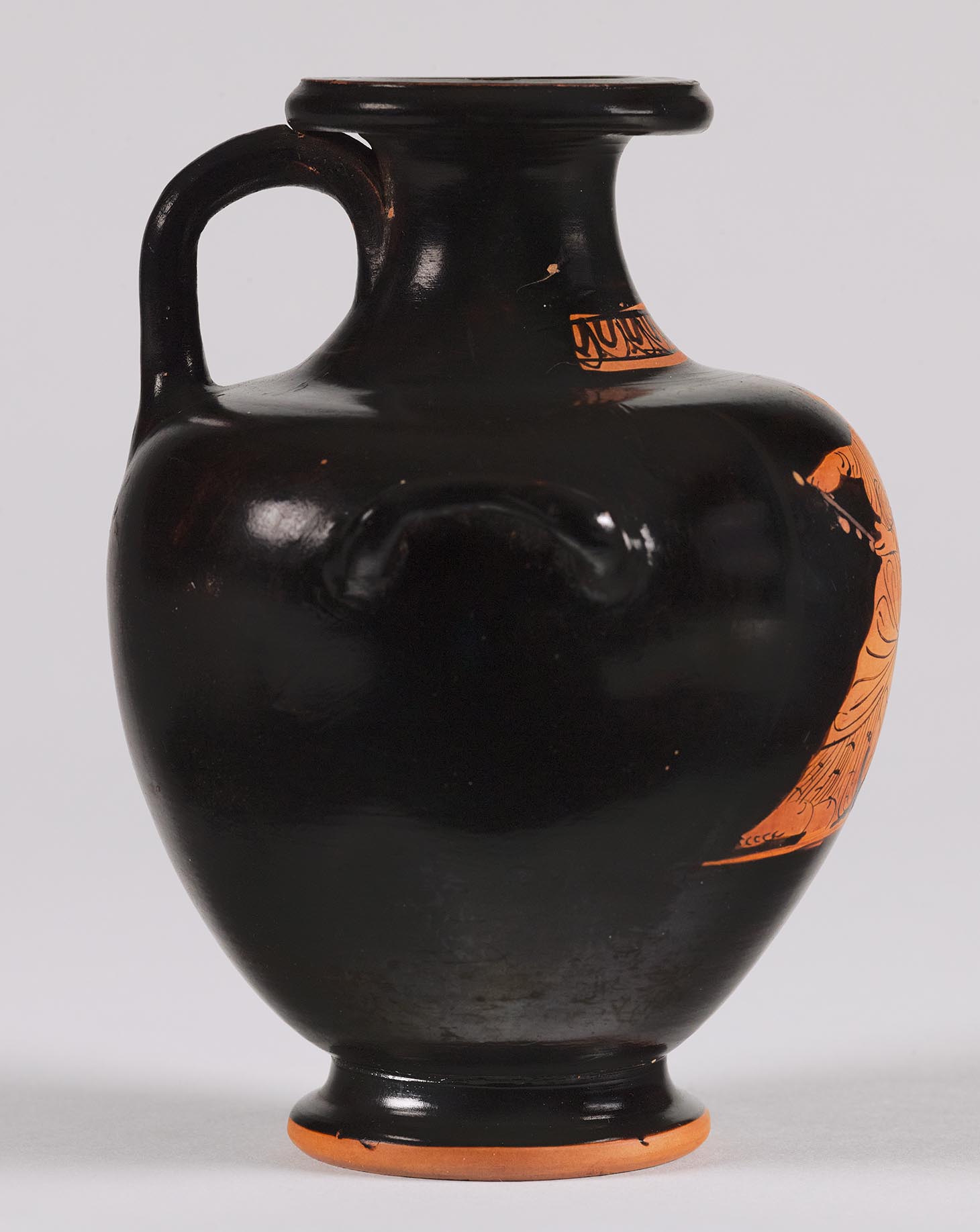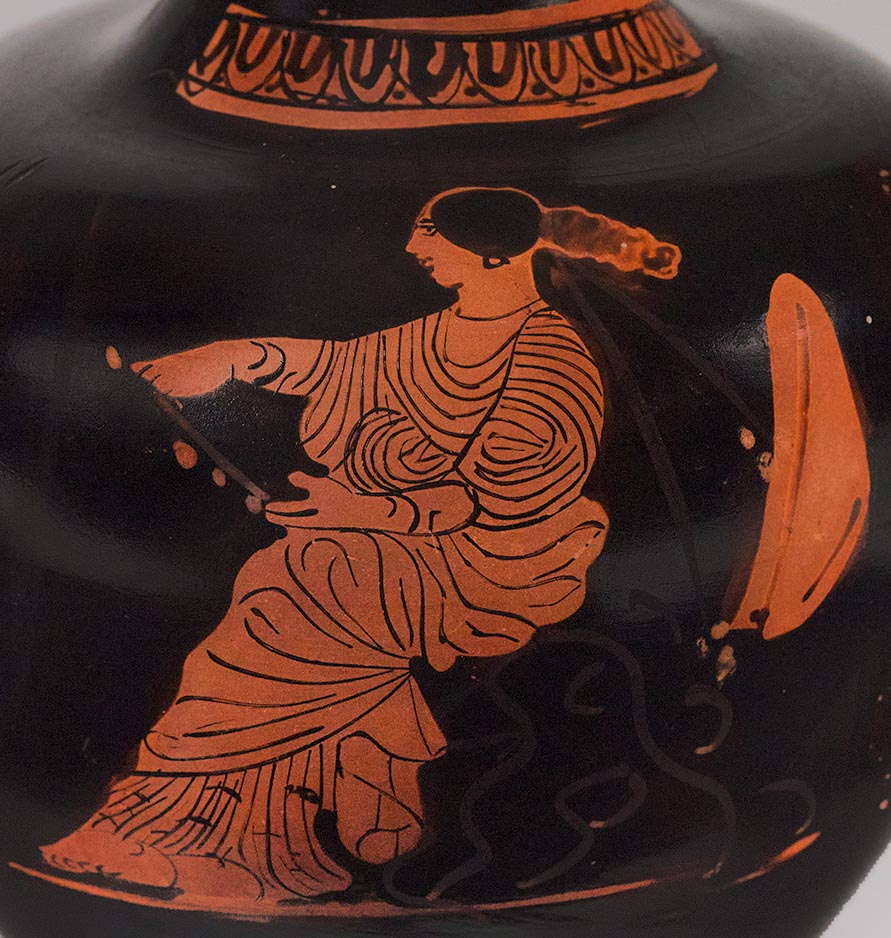Provenance
April 10, 1930, sale, Joseph Brummer (New York, NY) to Princeton University.
Shape and Ornament
Overhanging torus rim, black, with grooved molding at top; upper surface flat. Interior of mouth and neck black, as is the underside of the overhang. Continuous profile from neck to foot. At base of neck on front, band of egg and dart. Black horizontal handles, round in section, on either side of shoulder, curving sharply upward. Black vertical strap handle, extending from neck to shoulder. Ovoid body with reserved groundline. Thick, flaring torus foot reserved underneath and on lower sides.
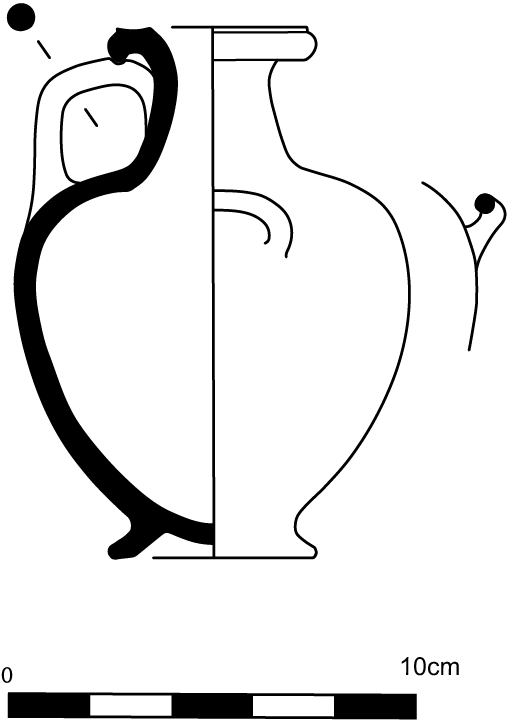
Subject
Seated woman. The single woman sits on a rock, facing left. The rock is loosely sketched in added red, now worn. She wears a chiton underneath a himation, the latter wrapped tightly around her hips and legs, and raises a red wreath, also worn, with both hands. She wears a necklace and earrings, and bracelets on both arms. Her hair is drawn back in a long, jutting queue and tied at the nape by a very long ribbon in added red, with beads on its ends. Behind her hangs a folded cloth with a dark border.
Attribution and Date
Unattributed. Circa 420–400 BCE.
Dimensions and Condition
h. 13.1 cm; w. 11.0 cm; diam. 9.7 cm; diam. of mouth 5.1 cm; diam. of foot 5.1 cm. Intact, with only small chips in the black gloss, primarily around handle AB and the juncture of foot and body.
Technical Features
Accessory color. Red: ribbon; necklace; rock.
Bibliography
G. Ferrari Pinney and B. S. Ridgway, Aspects of Ancient Greece, exh. cat., Allentown Art Museum (Allentown, PA, 1979), 102–3, no. 48; Ancient Greece: Life and Art, exh. cat., Newark Museum (Newark, NJ, 1980), no. 78; Abbreviation: BAPDBeazley Archive Pottery Database. http://www.beazley.ox.ac.uk 6281.
Comparanda
Although she did not attribute it to the artist, Ferrari Pinney (Ferrari Pinney and Ridgway, Aspects, 102) associated Princeton’s hydria with the Bull Painter, for whom see Abbreviation: ARV2J. D. Beazley. Attic Red-Figure Vase-Painters. 2nd ed. Oxford, 1963 1349–51, 1691. Cf., for instance, two hydriai of similar shape, ornament, and figural style: Eichenzell, Schloss Fasanerie 37 (Abbreviation: ARV2J. D. Beazley. Attic Red-Figure Vase-Painters. 2nd ed. Oxford, 1963 1350.27; Abbreviation: BAPDBeazley Archive Pottery Database. http://www.beazley.ox.ac.uk 240036); and Paris, Louvre MN 723 (Abbreviation: ARV2J. D. Beazley. Attic Red-Figure Vase-Painters. 2nd ed. Oxford, 1963 1350.26; Abbreviation: BAPDBeazley Archive Pottery Database. http://www.beazley.ox.ac.uk 240035). Note the shape of the head, the simple facial features, the arrangement of the hair, and the border of the dress on the figure at the right on the hydria in the Louvre. The Bull Painter painted a number of miniature hydriai of this type, with a nearly flat shoulder, sharply upward-curving handles, and a flaring torus foot, all of which become generally popular in the later fifth century. The Bull Painter, however, rarely depicted terrain, and similar images of seated women proliferated in the so-called Ornate Style of the Meidias Painter and his teachers and followers: e.g., in the manner of the Meidias Painter, Mainz, Univ. 118 (Abbreviation: ARV2J. D. Beazley. Attic Red-Figure Vase-Painters. 2nd ed. Oxford, 1963 1327.87; Abbreviation: BAPDBeazley Archive Pottery Database. http://www.beazley.ox.ac.uk 220643); by Aison, Paris, Louvre MNB 2109 (Abbreviation: ARV2J. D. Beazley. Attic Red-Figure Vase-Painters. 2nd ed. Oxford, 1963 1174.7; Abbreviation: BAPDBeazley Archive Pottery Database. http://www.beazley.ox.ac.uk 215563). The Meidias Painter and his followers, however, preferred more complicated, multifigural compositions.
